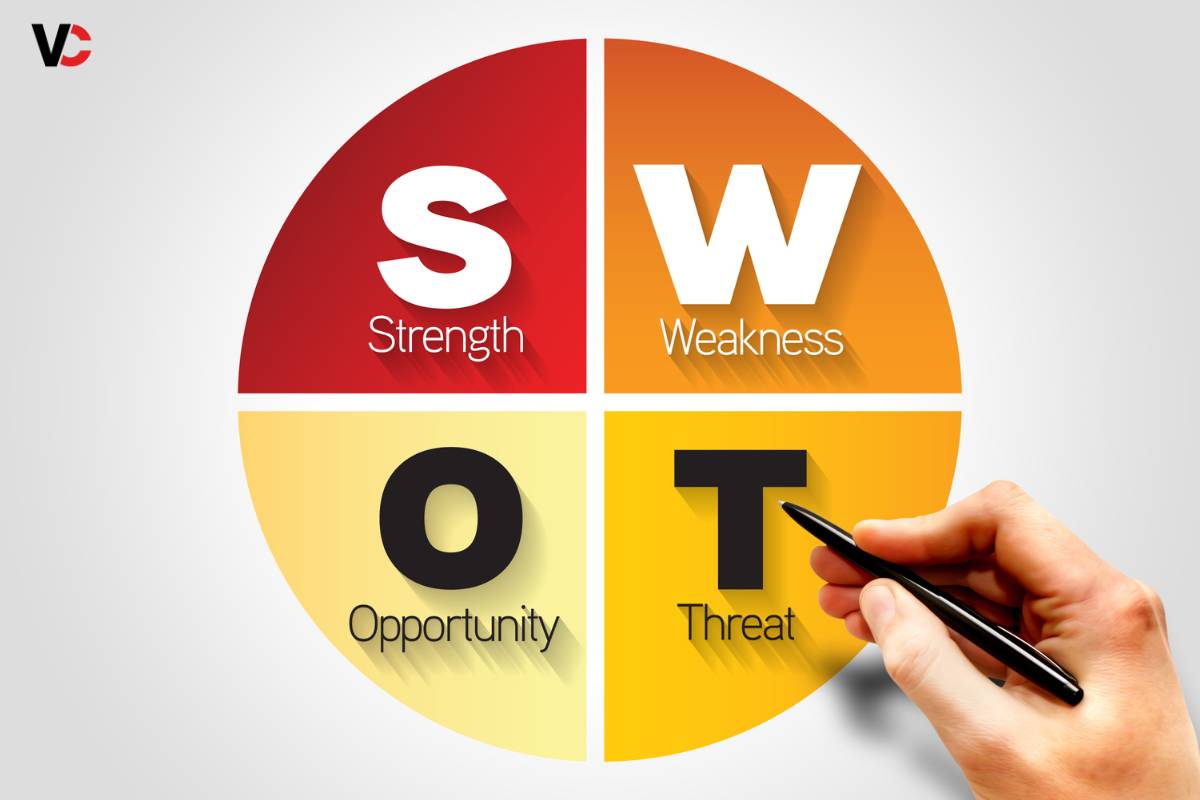SWOT Analysis stands as a cornerstone of strategic planning, providing businesses with a structured framework to assess internal strengths and weaknesses, as well as external opportunities and threats. By systematically examining these factors, organizations can gain valuable insights into their competitive position, identify strategic priorities, and make informed decisions to achieve their objectives. In this definitive guide, we explore the intricacies of SWOT Analysis, delving into its key components, applications, and best practices for strategic planning and decision-making.
Understanding SWOT Analysis
SWOT Analysis is a strategic tool used by businesses to evaluate their internal capabilities and external environment systematically. The acronym “SWOT” stands for Strengths, Weaknesses, Opportunities, and Threats, representing the four key dimensions analyzed during the process. By conducting an Analysis, organizations can gain a comprehensive understanding of their current position and develop strategies to leverage strengths, mitigate weaknesses, capitalize on opportunities, and address threats effectively.
Key Components of SWOT Analysis

1. Strengths
Strengths refer to the internal capabilities and resources that give an organization a competitive advantage in the marketplace. These can include factors such as a strong brand reputation, innovative product offerings, a talented workforce, robust financial performance, and efficient operational processes.
2. Weaknesses
Weaknesses are internal factors that hinder an organization’s performance or competitive position. These may include aspects such as outdated technology, limited financial resources, ineffective marketing strategies, lack of skilled personnel, or poor customer service.
3. Opportunities
Opportunities represent external factors or trends in the market that present favorable conditions for growth and success. These can include emerging market trends, technological advancements, changes in consumer behavior, new market segments, or favorable regulatory changes.
4. Threats
Threats are external factors that pose challenges or risks to an organization’s success. These may include factors such as intense competition, economic downturns, market saturation, disruptive technologies, regulatory changes, or shifting consumer preferences.
Applications of SWOT Analysis

1. Strategic Planning
SWOT Analysis serves as a foundational tool for strategic planning, helping organizations assess their internal capabilities and external environment to identify strategic priorities and develop actionable strategies that leverage strengths and opportunities while mitigating weaknesses and threats.
2. Competitive Analysis
SWOT Analysis enables organizations to conduct a comprehensive competitive analysis by comparing their strengths and weaknesses against those of competitors. This helps identify areas where the organization has a competitive advantage and areas where it may be vulnerable to competitive threats.
3. Product Development
SWOT Analysis can inform product development strategies by identifying market opportunities and assessing internal capabilities to meet customer needs effectively. By aligning product development efforts with market demand and organizational strengths, businesses can create products that resonate with target audiences and gain a competitive edge.
4. Risk Management
SWOT Analysis facilitates risk management by identifying potential threats and vulnerabilities that may impact business operations. By proactively identifying and addressing risks, organizations can develop contingency plans and mitigation strategies to minimize the impact of external threats on their performance and reputation.
5. Strategic Decision-Making
SWOT Analysis provides valuable insights for strategic decision-making, guiding leaders in evaluating alternative courses of action and making informed decisions that align with organizational goals and objectives. By considering the internal and external factors analyzed in the Analysis, businesses can prioritize initiatives, allocate resources effectively, and navigate uncertainties with confidence.
Best Practices for Conducting SWOT Analysis

1. Gather Diverse Perspectives
Involve stakeholders from various departments and levels of the organization to ensure a comprehensive and balanced assessment of strengths, weaknesses, opportunities, and threats.
2. Focus on Specific Goals
Define clear objectives and focus areas for the SWOT Analysis to ensure relevance and alignment with strategic priorities.
3. Be Honest and Objective
Encourage open and honest discussions during the Analysis process, and avoid bias or wishful thinking when assessing internal capabilities and external factors.
4. Prioritize Actionable Insights
Identify key insights and strategic implications emerging from the SWOT Analysis and prioritize actionable initiatives that will drive meaningful change and improvement.
5. Regularly Review and Update
SWOT Analysis is not a one-time exercise but an ongoing process. Regularly review and update the analysis to reflect changes in the internal and external environment, ensuring its relevance and effectiveness in guiding strategic decision-making.
Conclusion
In conclusion, SWOT Analysis is a powerful tool for strategic planning and decision-making, providing organizations with a structured framework to assess internal strengths and weaknesses, as well as external opportunities and threats. By conducting a SWOT Analysis, businesses can gain valuable insights into their competitive position, identify strategic priorities, and develop actionable strategies to achieve their objectives in today’s dynamic and competitive business environment. By integrating Analysis into their strategic processes, organizations can position themselves for success and navigate uncertainties with confidence, ultimately driving sustainable growth and success.
FAQs
1. What is SWOT Analysis?
SWOT Analysis is a strategic planning tool used by organizations to identify and evaluate their internal Strengths and Weaknesses, as well as external Opportunities and Threats. It provides a comprehensive framework for assessing the current position of a business and developing strategies to leverage strengths, address weaknesses, capitalize on opportunities, and mitigate threats.
2. How is SWOT Analysis different from other strategic planning tools?
SWOT Analysis focuses specifically on internal and external factors that directly impact the organization’s performance and competitive position. Unlike other tools that may examine broader environmental trends or industry dynamics, Analysis provides a targeted assessment of factors that are directly relevant to the organization’s strategic objectives.
3. When should a business conduct a SWOT Analysis?
SWOT Analysis should be conducted at various stages of strategic planning, including during the formulation of business plans, market assessments, product development, and performance evaluations. It can also be valuable during periods of significant change or when entering new markets to assess risks and opportunities.
4. How can businesses use the findings of SWOT Analysis effectively?
The findings of the Analysis can inform strategic decision-making and guide the development of actionable strategies that align with the organization’s goals and objectives. By leveraging strengths, addressing weaknesses, capitalizing on opportunities, and mitigating threats identified through the analysis, businesses can enhance their competitive position and achieve sustainable growth.
5. What are some common pitfalls to avoid when conducting a SWOT Analysis?
Common pitfalls to avoid when conducting SWOT Analysis include bias or subjectivity in the assessment of internal strengths and weaknesses, overlooking important external factors, such as emerging trends or competitive threats, and failing to prioritize actionable insights that drive strategic decision-making. It’s essential to approach Analysis with objectivity, involve diverse perspectives, and focus on actionable recommendations for the organization.
Also Read: Exploring the Pros and Cons of Veneers: A Comprehensive Guide


















